Still reaching for the moon
JMU professor looks to future following fiery end to MoonArk project
JMU Headlines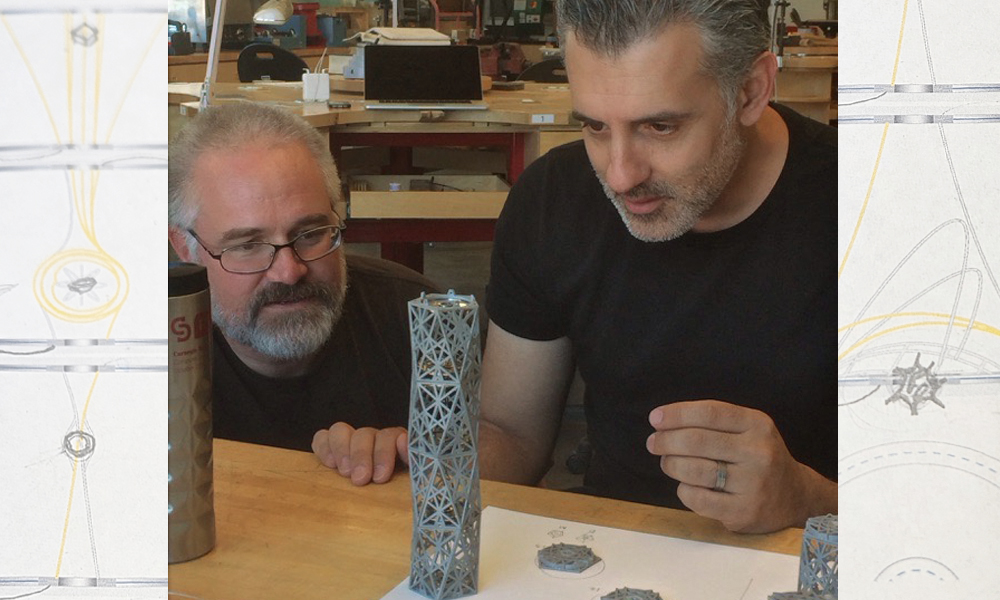
SUMMARY: Space travel is hard, and shooting for the moon doesn’t often go as planned. But as professor Mark Rooker learned after creating artwork for a recent lunar mission, success comes with knowing when to stay grounded. Following the failed January 2024 moon landing of the Peregrine Lunar Lander and the subsequent destruction of the MoonArk project, Rooker said he's optimistic that the international team's plans will take flight again.
In 2013, Harrisonburg-based sculptor Mark Rooker answered a call to join the team for the MoonArk project — an international effort that sought to send proof of life from planet Earth into outer space. The project’s website describes the endeavor as “a highly collaborative, massively integrated and impossibly small museum … intended to spark wonderment for future humans through poetically entangled visual narratives of the arts, humanities, sciences and technologies.”
The mission was planned for 2016 but was repeatedly delayed until Jan. 8, when United Launch Alliance’s unmanned Vulcan Centaur rocket carried Astrobotic Technology’s Peregrine Lunar Lander past Earth’s atmosphere. Traveling with NASA’s Commercial Lunar Payload Services program, the MoonArk fell short of the moon.
Soon after takeoff, the lunar lander sustained a critical propellant leak that prevented it from making a soft landing on the moon or returning its cargo to Earth. Instead, the vessel remained in orbit for about 10 days before ending in a controlled reentry into Earth’s atmosphere. On Jan. 18, Peregrine burned up along with the artwork created by Rooker and his international colleagues.
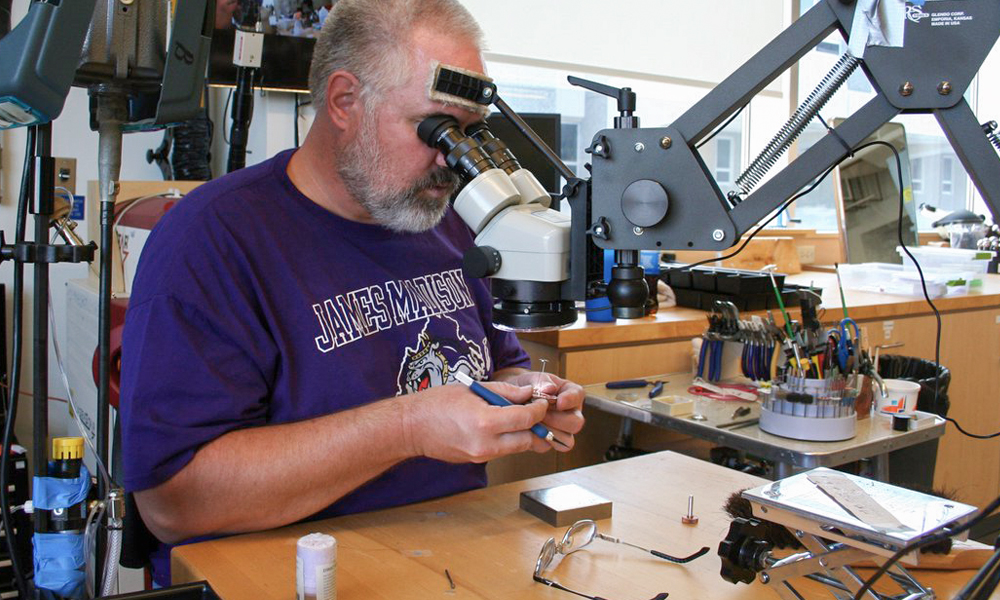
“This art was launched with such hope and burned up with such disappointment,” said Rooker, a professor of art in the School of Art, Design and Art History. “It hurts to know that something I made that was supposed to last forever lasted a week. Then again, I’m one of the few artists who’s had their art taken into space as part of the mission. I’m still stoked about that.”
Optimistic for the future despite recent setbacks, he said, “I think we’re all grieving the loss of that thing and trying to figure out what’s next. I’m certainly enthusiastic to try again.” Another MoonArk mission would require a lot of time, money and effort, but it has a chance of happening in one of two ways.
|
“This art was launched with such hope and burned up with such disappointment. … Then again, I’m one of the few artists who’s had their art taken into space as part of the mission. I’m still stoked about that.” |
First, since Rooker created two exact copies of each component for the project, there is still a version of the team’s artwork on the planet as part of an exhibition tour around the U.S. and Europe; however, since it’s now the property of the Smithsonian Institution’s National Air and Space Museum, the MoonArk team would need to secure permission to launch it into space for a permanent exhibition on the moon, which might not suit the Smithsonian’s interests.
“What’s going to count more, the air and space part, or the museum part?” Rooker wondered. More likely, though, he said the MoonArk team will decide to construct the artwork all over again, requiring a great deal of work. Rooker estimated he spent 800 to 1,000 hours on his part of the project but said it could be easier next time, since the team can also build on the lessons they learned the first time around.
Among other elements, the MoonArk project includes sapphire disks that were printed microscopically with imagery and other data in 10,000 dpi resolution and could only be viewed under a microscope. Rooker built the central design with help from master machinist Mark Starnes, who worked in the College of Integrated Science and Engineering at the time and fabricated pieces to hold the frame, in addition to other parts, while Rooker constructed it.
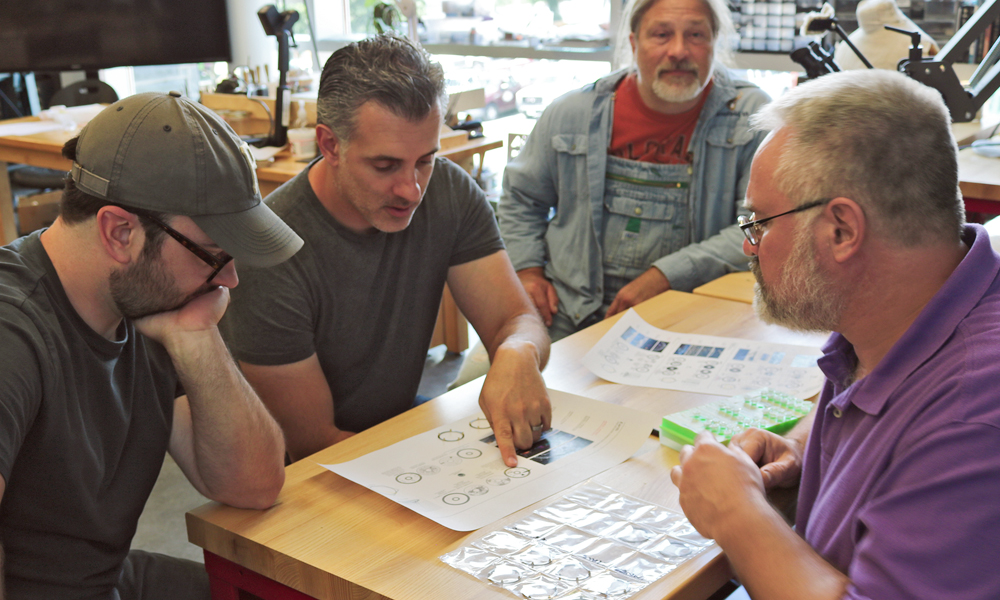
The structure features four chambers (containing 40 microchambers), which contain various artifacts from around the planet — “poetic bits of stuff” like DNA from a whale; a 1-millimeter sample of concentrated and dried blood from 33 artists; and 36 purified waters from 18 rivers, five oceans, and various geysers, lakes, glaciers, wells, and springs to represent the new and old waters, and the high and low waters.
“Each one has an interesting thing in it that, when you add them all up, it gives you a picture of the Earth and the moon and people and life on Earth. And to me, they’re all fascinating,” Rooker said. “[It’s] all kinds of interesting things … that took years and years to collect. Which is also kind of the tragedy of having them burn up. But kind of the beauty of it too.”
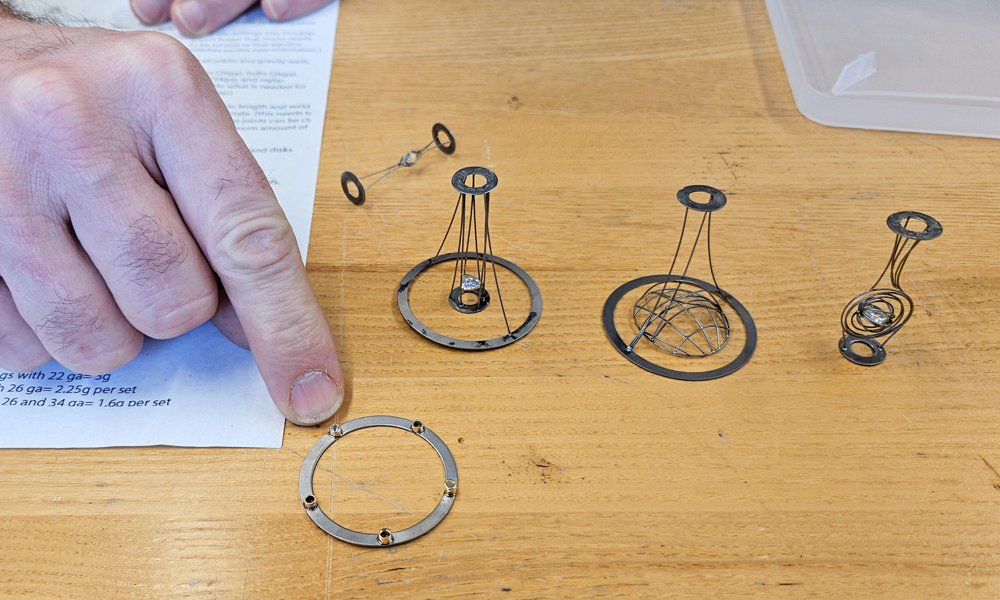
Each chamber symbolizes a step along the MoonArk’s journey: Earth and the moon, plus the space in between and the space beyond. “What we were trying to do with the art on this mission is to go back to the moon, not just to establish a presence on the moon but to establish the ability to go farther,” Rooker said.
“This first chamber is the surface of the Earth and then the flight path of attempts to leave Earth’s orbit. And then finally getting it right and being able to leave and go to the moon. And then we were hoping, with our mission, to get here,” he said, pointing to the third level, representing the moon.
|
“Normally artists don’t have to deal with aerospace engineering.” |
“But space is hard,” he said. “We’ve had a lot more of this — the up and then right down in a fireball — than we’ve ever had successful landings. Hopefully, we’ll make it there the next time, much less to make it beyond.”
The MoonArk project was the brainchild of William L. “Red” Whittaker, professor of robotics at Carnegie Mellon University in Pittsburgh, Pennsylvania, and founder of Astrobotic Technology Inc., and CMU art professor Lowry Burgess, a renowned space artist. Burgess co-led the project with Mark Baskinger, who attended graduate school at the University of Illinois at Urbana-Champaign with Rooker.
For Rooker, who has taught at JMU since 2000, being asked to partner with colleagues at a research university like CMU, even years before JMU became an R2 doctoral university, was affirming for him and also proved the quality of talent at JMU. “Research-wise, I’m doing work that’s just as solid,” he said. “That got us playing with people who were already solidly established as the big leagues. I don’t know if JMU ever would have had the chance to stick something on a rocket ship without that partnership.”
|
“Honestly, I think I’d rather have my art burn up in orbit than have it sitting on a shelf forever. Better to have that opportunity, because it’s not one that artists are given.” |
If the MoonArk team attempts another mission, Rooker said implementing lessons from their first go-round will help it run more smoothly. He recalled the difficulty of working on the project in Harrisonburg while trying to communicate with key team members at CMU who he learned were making a design change that required him to start all over again.
Next was their crash course in aerospace engineering, which meant figuring out how to make their artistic elements light, small and durable enough for space travel. The sealed microchambers containing liquids needed to remain safe while moving from Earth’s atmosphere into the vacuum of space and onto the lunar surface.
Additionally, each chamber had to be grounded to conduct electricity so it wouldn’t fry the electronics on the lunar lander. Rooker said they didn’t know that until after building the project. “Normally artists don’t have to deal with aerospace engineering,” Rooker explained. “We had to learn it for the first one; we don’t have to learn that all over again.”
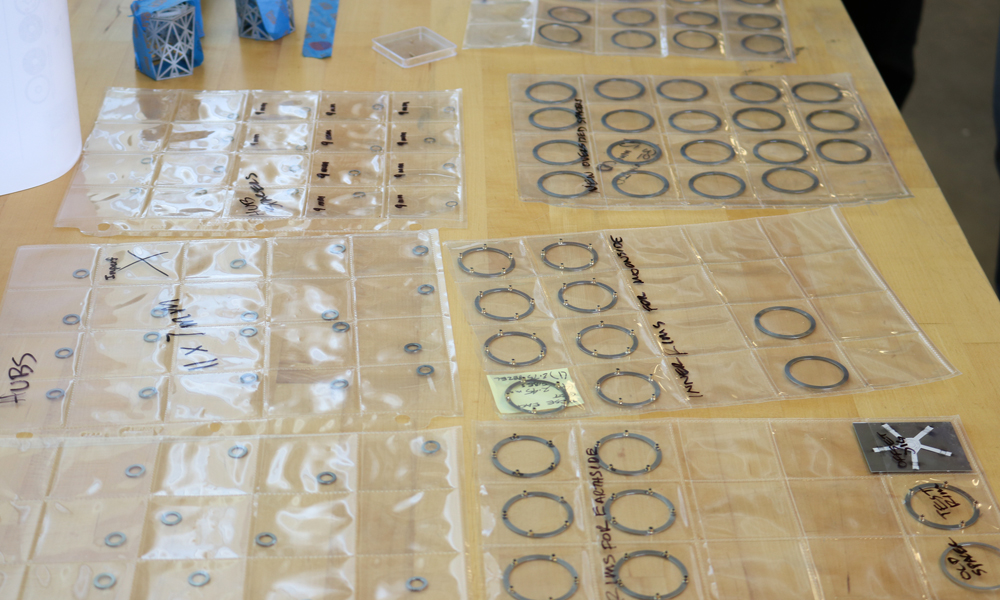
Regardless of their method for providing a future project, he said another space mission will also already require an outside element: securing a ride to the moon. Space travel isn’t cheap. Astrobotic donated space to the MoonArk project’s first attempt, waiving the approximate $650,000 it cost the company to shuttle the art project to the moon.
Shipment to the moon costs $1 million per pound, Rooker explained, and with the MoonArk’s micro payload weighing in at nearly 10 ounces, that means someone would need to shell out a fortune to give them another shot at a lunar landing. “[F]or somebody else to take it, that second copy, that’s a big ask,” Rooker said. Additionally, he said, another moon mission would carry “all the same risks as the first one.”
Still, he’s optimistic, in part because of how long it took the first mission to happen. In 2016, private companies didn’t have the technology to successfully make it out of the Earth’s orbit, but now they do.
As frustrating and disappointing as it is to work so hard and to wait more than 10 years, only to see his efforts crash and burn, Rooker said he’s grateful to have been asked to be part of a landmark endeavor. “Honestly, I think I’d rather have my art burn up in orbit than have it sitting on a shelf forever,” he said. “Better to have that opportunity, because it’s not one that artists are given.”
